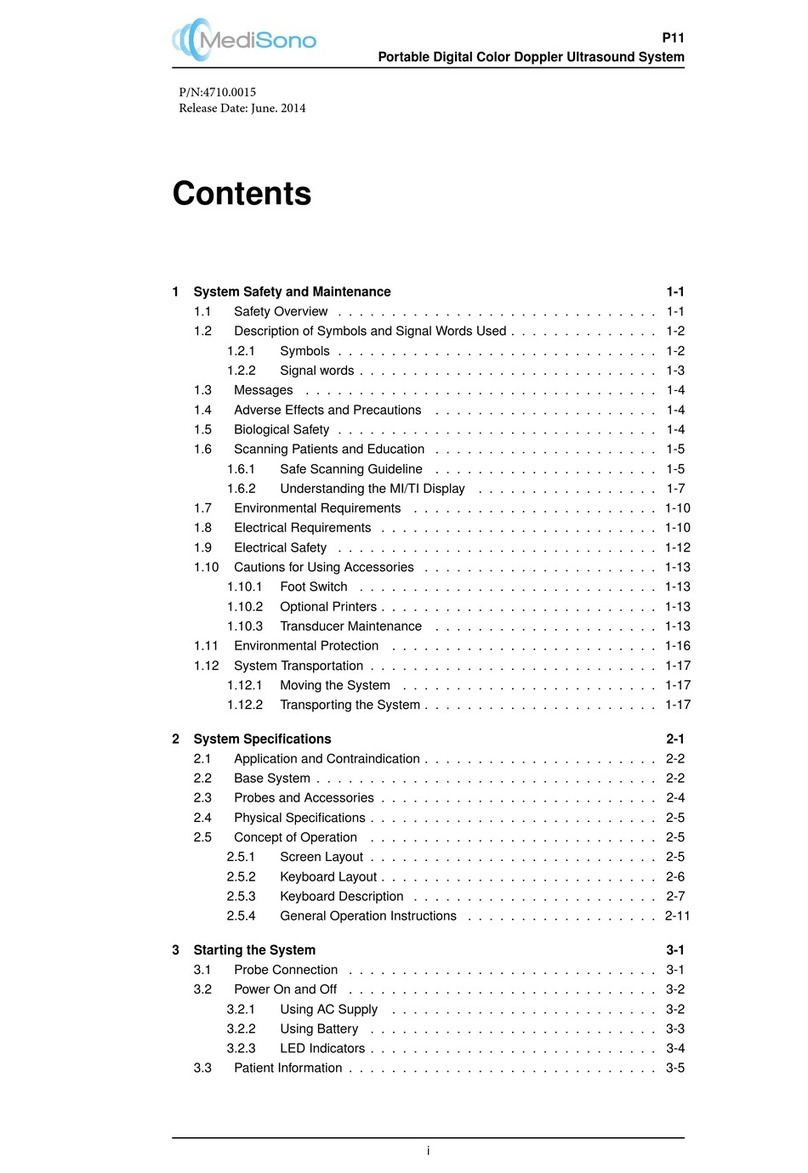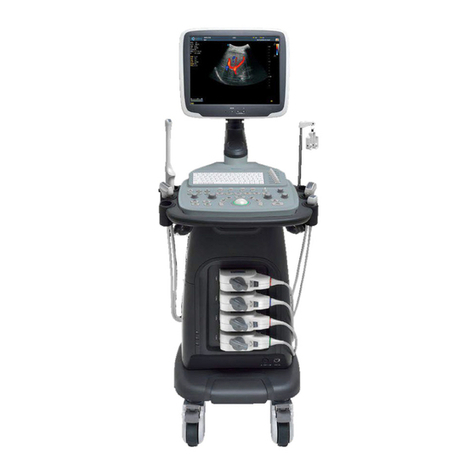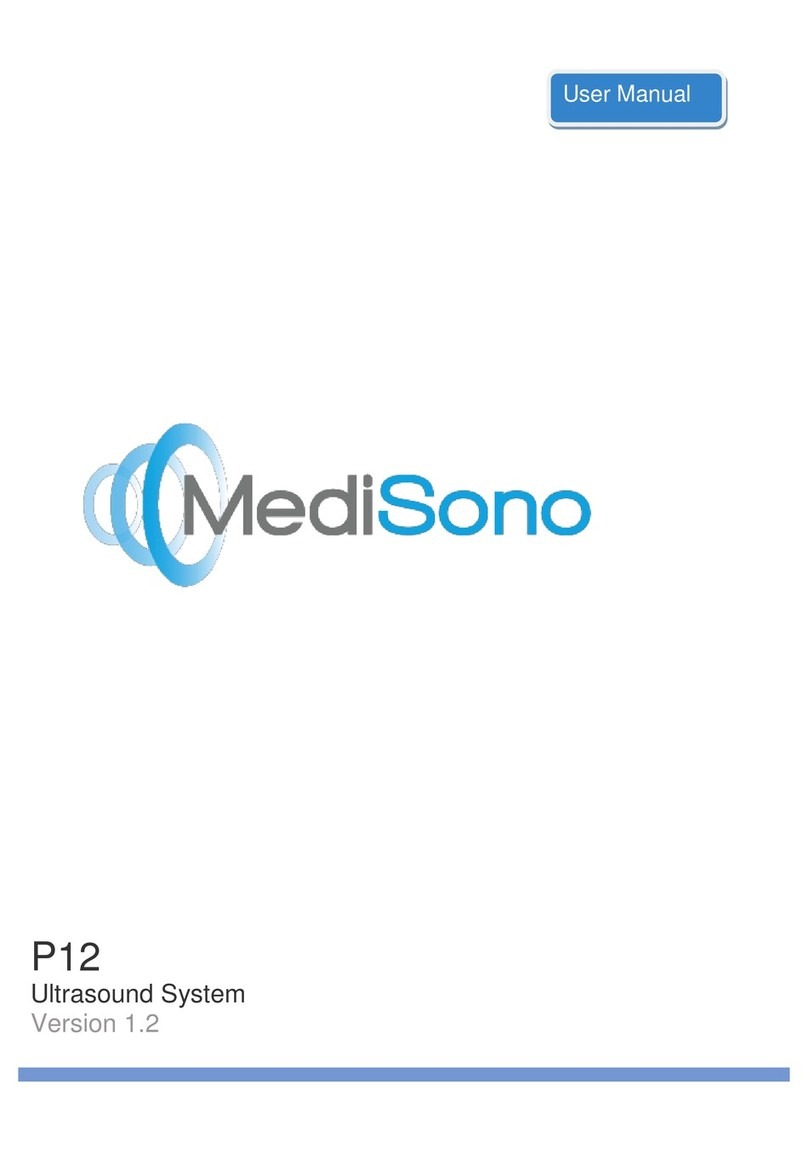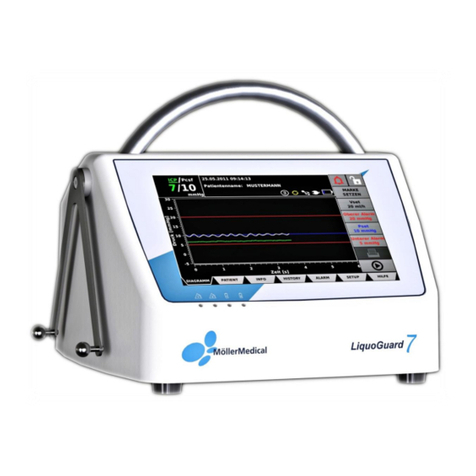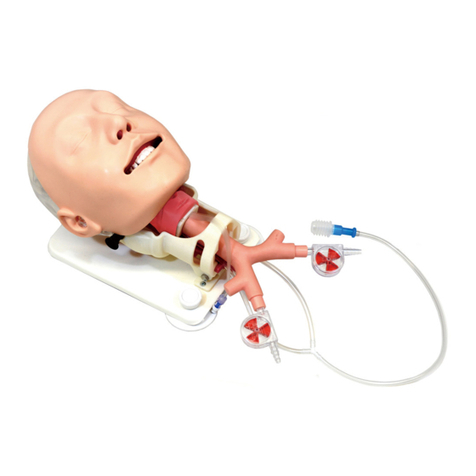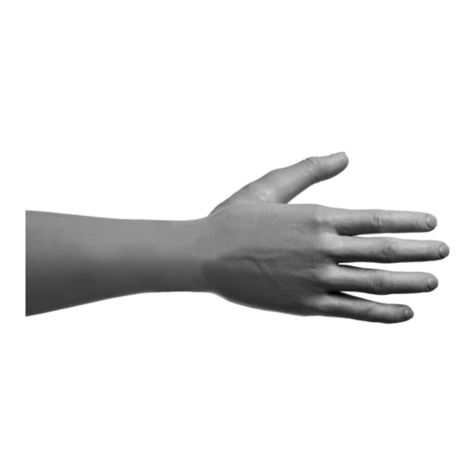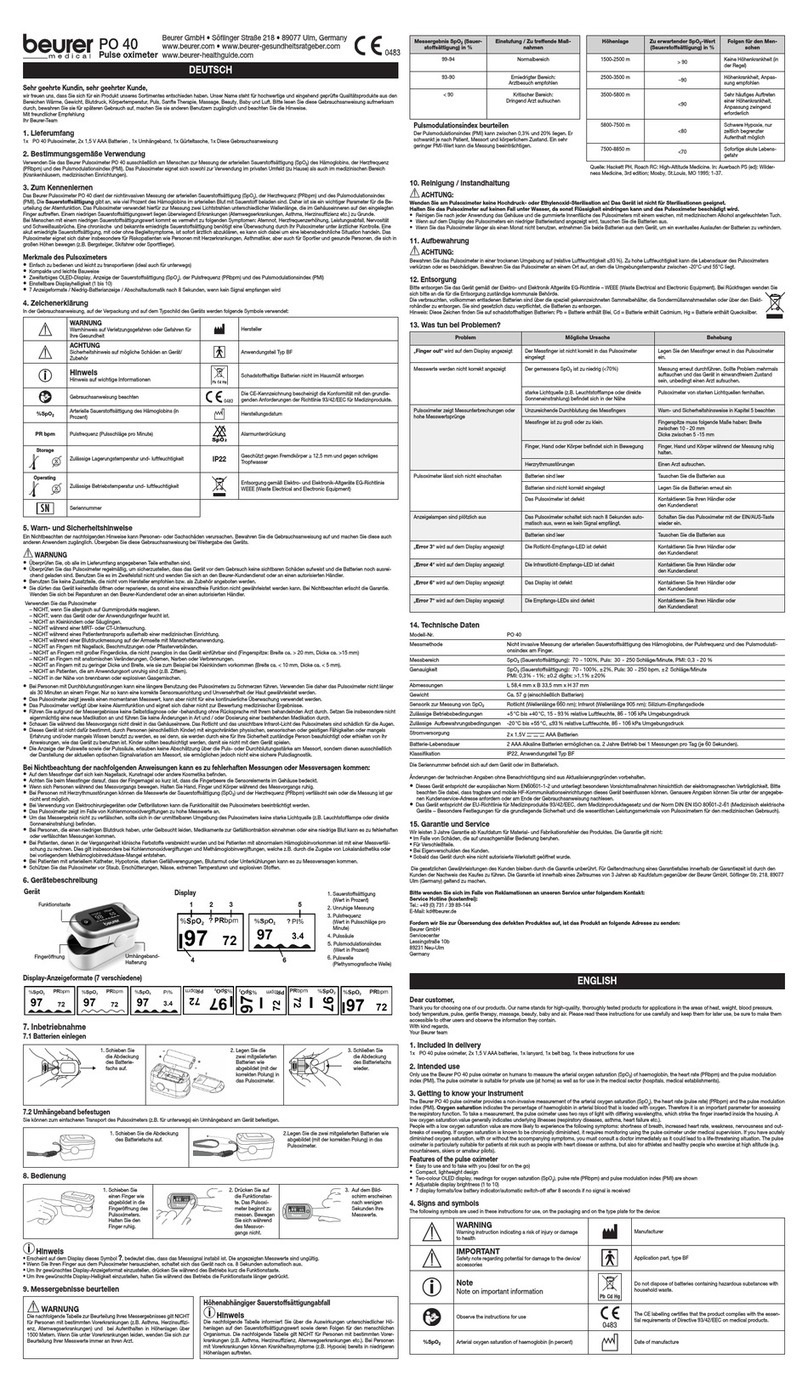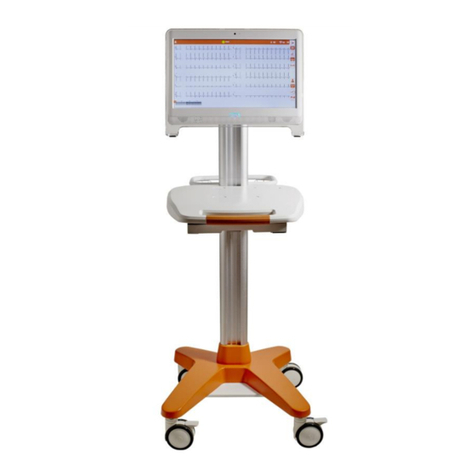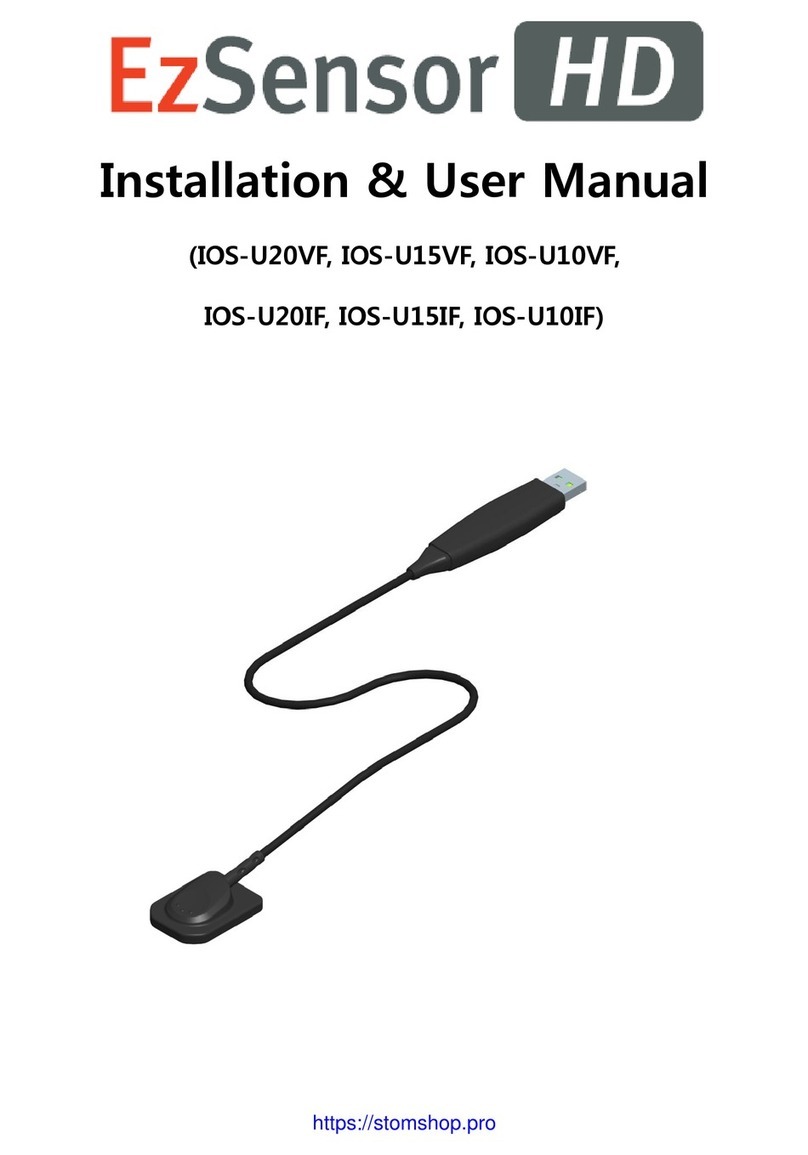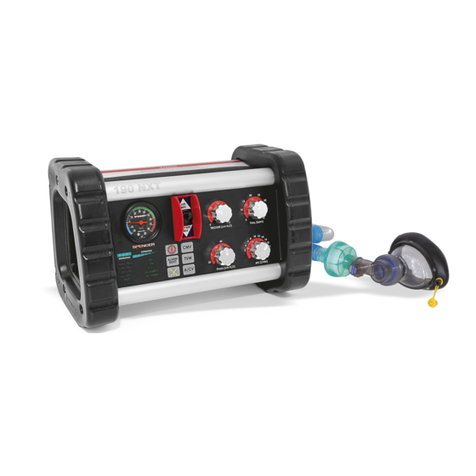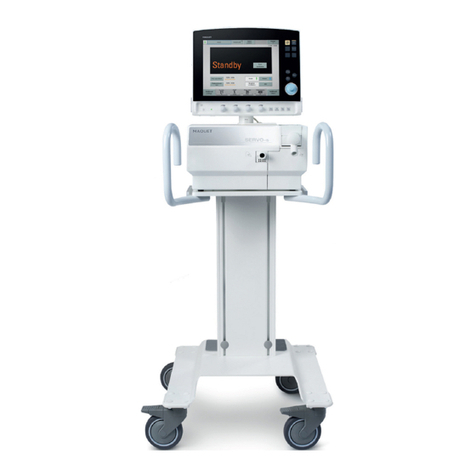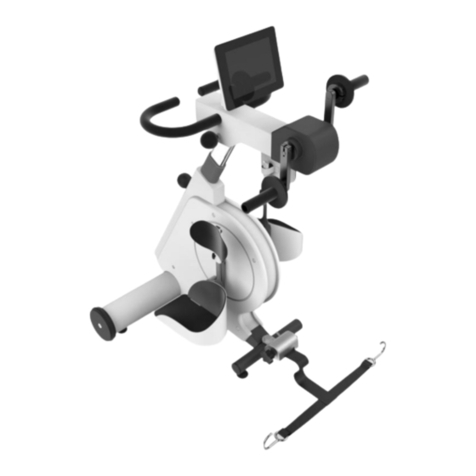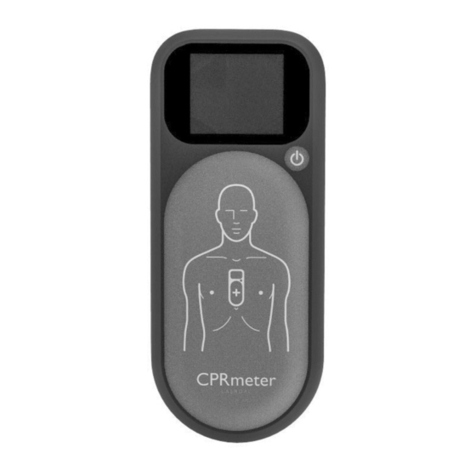MediSono P25 EXP User manual

User Manual
P25 EXP
Ultrasound System
Version 1.4

About This Manual
P/N: 4710.01421X01
4710.00447A06
Product Model: P25EXP
Statement
The manufacturer owns the intellectual property rights to this manual, and also maintains the
contents of this manual as confidential information. This manual is a reference to operation,
maintenance or cleaning for the product and does not convey any license under the patent rights of
the manufacturer, nor the rights of others.
This manual contains the information protected by copyrights or patents. Reproduction, amendment
or translation of this manual in any manner whatsoever without the written permission of the
manufacturer is strictly prohibited.
All information contained in this manual is believed to be correct. The manufacturer shall not be
liable for errors contained herein or for incidental or consequential damages in connection with
the furnishing, performance or use of this manual. The manufacturer does not assume any liability
arising out of any infringements of patents or other rights of third parties.
This manual is based on the maximum configuration and therefore some contents may not apply to
your product.
This manual is subject to change without prior notice and legal obligation.
Manufacturer’s Responsibility
The manufacturer is responsible for the effects on safety, reliability and performance of this product,
only if:
●All installation operations, expansions, changes, modifications and repairs of this product are
conducted by the manufacturer authorized personnel;
●The use or application of the product or the use of parts or accessories is approved by the
manufacturer.
●The electrical installation of the relevant room complies with the applicable national and local
requirements; and
●The product is used in accordance with the instructions for use.
Documentation
The manufacturer provides the documentation consisting of various manuals:
●The basic user manual (this manual) describes the basic functions and operating procedures of
the system.

●The advanced user manual provides information about the measurements and calculations
available in each mode.
●Compact Disc (CD) provides the acoustic output data related to the system.
Signal words in this manual are defined as follows. Please understand their meanings clearly before
reading this manual.
Signal Word
Meaning
!
Indicates a potentially hazardous situation which, if not avoided, could result in
death or serious injury.
Indicates a potentially hazardous situation which, if not avoided, may result in
malfunction or damage of the system.
NOTE
Indicates precautions or recommendations that should be used in operating the
system.
Indicates a potentially biological hazardous situation which, if not avoided, may
result in disease transmission.
Boldfaced
Word
Indicates keys and controls located on the control panel, or on-screen objects
such as menu items or keys.
Contact Information
Manufacturer: MEDISONO
Address: 3511 Silverside RD. Wilmington, DE 19810,United States
INFO@MEDISONO.COM

Contents
1. Safety
1.1 Intended Use ..........................................................................................................................2
1.2 Safety Precautions..................................................................................................................2
1.2.1 Electrical Safety...........................................................................................................2
1.2.2 Mechanical Safety.......................................................................................................4
1.2.3 Accessories Caring ......................................................................................................4
1.2.4 Biohazard Considerations............................................................................................5
1.3 Acoustic Power Principle.......................................................................................................6
1.3.1 Biological Safety.........................................................................................................6
1.3.2 ALARA........................................................................................................................6
1.3.3 Mechanical and Thermal Indices................................................................................. 7
1.3.4 Transducer Surface Temperature Limits .....................................................................8
1.3.5 Imaging Functions that Change Acoustic Output........................................................8
1.4 Safety Symbols ......................................................................................................................8
2. Overview
2.1 System Configuration ..........................................................................................................12
2.2 Physical Specifications.........................................................................................................12
2.3 System Components.............................................................................................................13
2.3.1 Peripheral Device Panel.............................................................................................15
2.3.2 Control Panel.............................................................................................................16
2.3.3 Basic Screen .............................................................................................................. 20
2.3.4 Touch Screen ............................................................................................................. 21
3. Preparing System
3.1 SystemAssembly................................................................................................................. 26
3.2 System Moving/Positioning.................................................................................................27
3.3 Connecting and Powering the System.................................................................................. 27
3.3.1 Using the Mains Supply ............................................................................................27
3.3.2 Using the Battery.......................................................................................................28
3.3.3 Indicators...................................................................................................................29
3.4 Powering On/Off the System...............................................................................................30
I


Contents
II
Basic User Manual
3.4.1 Powering On the System........................................................................................... 30
3.4.2 Powering Off the System .......................................................................................... 30
3.4.3 System Standby......................................................................................................... 30
3.5 Adjusting the System........................................................................................................... 30
3.5.1 Adjusting the Monitor Arm ....................................................................................... 30
3.5.2 Adjusting the Display Monitor.................................................................................. 31
3.6 Connecting the Probe........................................................................................................... 32
3.6.1 Connecting the Probe ................................................................................................ 32
3.6.2 Connecting the Pencil Probe..................................................................................... 33
3.6.3 Disconnecting the Probe............................................................................................ 33
3.7 Connecting the Peripheral Device ....................................................................................... 33
3.7.1 Connecting the Footswitch........................................................................................ 33
3.7.2 Connecting the Video Printer .................................................................................... 34
3.7.3 Connecting the Network Printer................................................................................ 34
3.7.4 Connecting the USB Printer...................................................................................... 35
4. Customize
4.1 General System Settings...................................................................................................... 38
4.1.1 General Settings ........................................................................................................ 38
4.1.2 Display Settings......................................................................................................... 40
4.1.3 Storage Settings......................................................................................................... 42
4.1.4 Defined-Key Settings................................................................................................ 43
4.2 Peripheral Device Settings................................................................................................... 44
4.3 Defining Annotation Library................................................................................................ 46
4.4 Bodymark Settings............................................................................................................... 48
4.5 Measurement Settings.......................................................................................................... 48
4.5.1 General Measurement Settings.................................................................................. 49
4.5.2 Application Settings .................................................................................................. 51
4.5.3 List Settings............................................................................................................... 54
4.6 Touch-Screen Settings......................................................................................................... 55
4.6.1 AddingA Parameter................................................................................................... 56
4.6.2 Modifying AParameter............................................................................................. 56
4.6.3 Deleting A Parameter................................................................................................. 56
4.7 Report Settings..................................................................................................................... 56
4.8 Configuring DICOM............................................................................................................ 57

Contents
Basic User Manual
III
4.8.1 Storage Service Settings............................................................................................57
4.8.2 Commitment Settings................................................................................................59
4.8.3 DICOM Worklist Settings..........................................................................................60
4.8.4 MPPS Settings...........................................................................................................62
4.8.5 Print Service Settings.................................................................................................63
4.9 Defining System Defaults....................................................................................................66
4.10 Viewing System Information .............................................................................................67
4.10.1 General Information ................................................................................................68
4.10.2 Acoustic Output....................................................................................................... 68
4.10.3 Touch Screen Information .......................................................................................68
4.11 Calibrating the Touch Screen.............................................................................................68
5. Preparing for Scan
5.1 Acquiring Patient Information..............................................................................................70
5.1.1 Beginning a New Patient...........................................................................................70
5.1.2 Retrieving Archived Information............................................................................... 72
5.1.3 Using DICOM Worklist................................................................................................. 73
5.2 Pausing/Resuming an Exam.................................................................................................73
5.2.1 Pausing an Exam .......................................................................................................73
5.2.2 Resume an Exam.......................................................................................................73
5.3 Completing/Discontinuing an Exam.................................................................................... 74
5.3.1 Completing an Exam.................................................................................................74
5.3.2 Discontinuing an Exam .............................................................................................74
6. Acquiring Imaging
6.1 Selecting a Probe and an Exam Type............................................................................................76
6.1.1 Customizing A Preset.................................................................................................76
6.1.2 Toarrange the presets display....................................................................................77
6.2 Acquiring B-Mode Images...................................................................................................78
6.2.1 Entering B Mode .......................................................................................................78
6.2.2 Optimizing B-Mode Images......................................................................................79
6.3 Acquiring Color Flow Images..............................................................................................85
6.3.1 CFM Mode ................................................................................................................85
6.3.2 PDI Mode ..................................................................................................................86
6.3.3 TDI Mode..................................................................................................................87
6.3.4 Optimizing CFM/PDI/TDI Mode Images..................................................................89

Contents
IV
Basic User Manual
6.4 Acquiring M-Mode Images................................................................................................. 93
6.4.1 M Mode..................................................................................................................... 93
6.4.2 Anatomical M-Mode ................................................................................................. 94
6.4.3 Optimizing M-Mode Images..................................................................................... 95
6.5 Acquiring Spectral Doppler Images..................................................................................... 98
6.5.1 PW Mode................................................................................................................... 98
6.5.2 CW Mode................................................................................................................ 100
6.5.3 Optimizing Spectral Doppler Images...................................................................... 102
6.6 Acquiring Triplex-Mode Images........................................................................................ 107
6.6.1 B+CFM/TDI +M..................................................................................................... 107
6.6.2 B+CFM/PDI/TDI +PW........................................................................................... 108
6.6.3 B+CFM/PDI+CW....................................................................................................110
7. Elastography
7.1 Acquiring Elastography Images..........................................................................................112
7.2 Optimizing Elastography Images........................................................................................113
7.2.1 Strain Map................................................................................................................114
7.2.2 Strain Process...........................................................................................................115
7.2.3 Transparency............................................................................................................115
7.2.4 Contrast....................................................................................................................115
7.2.5 Persistence................................................................................................................115
7.2.6 Frequency.................................................................................................................115
7.3 Working with Elastography Images....................................................................................116
8. Contrast Imagen
8.1 Entering Contrast Imaging..................................................................................................118
8.2 Optimizing Contrast Images...............................................................................................119
8.2.1 Gain......................................................................................................................... 120
8.2.2 Flash Power............................................................................................................. 120
8.2.3 Flash Time............................................................................................................... 120
8.3 Acquiring Contrast Images ................................................................................................ 120
8.4 Working with Contrast Images........................................................................................... 121
9. 3D Image
9.1 Acquiring 3D Images......................................................................................................... 124
9.2 Working with 3D Images................................................................................................... 126

Contents
Basic User Manual
V
9.2.1 Adjusting ROI.......................................................................................................... 126
9.2.2 Setting Display Format............................................................................................ 127
9.2.3 Using Auto Face ...................................................................................................... 128
9.2.4 Setting Render Mode...............................................................................................128
9.2.5 Cropping Reviews ...................................................................................................128
9.2.6 Moving/Rotating/Magnifying Images..................................................................... 130
9.2.7 Optimizing 3D Image..............................................................................................131
9.2.8 Observing Reference Image by the Plane................................................................132
9.2.9 Observing Reviews by the Slice..............................................................................132
9.2.10 Setting the Scan Mode........................................................................................... 133
9.2.11 Adjusting ZAngle/ZScale ......................................................................................134
9.2.12 Restoring the Image...............................................................................................134
9.2.13 Customizing Presets ..............................................................................................134
9.2.14 Performing Follicle Auto-Measurement................................................................ 134
10. 4D image
10.1 Acquiring 4D Images .......................................................................................................136
10.1.1 Entering the Real-Time 4D Imaging .....................................................................136
10.1.2 Acquiring Dynamic 3D Image...............................................................................138
10.2 Working with 4D Images .................................................................................................138
11. Working with the Images
11.1 Imaging Features..............................................................................................................140
11.1.1 Imaging Reverse....................................................................................................140
11.1.2 Split Screen Display ..............................................................................................140
11.1.3 m-Tuning...............................................................................................................142
11.1.4 Harmonic Imaging.................................................................................................142
11.1.5 Panoramic Imaging................................................................................................142
11.2 Magnifying an Image....................................................................................................... 145
11.3 Freezing an Image............................................................................................................145
11.4 Using Cine........................................................................................................................145
11.4.1 Reviewing Cine .....................................................................................................146
11.4.2 Cutting Cine...........................................................................................................146
11.5 Annotations and Body Marks........................................................................................... 146
11.5.1 Annotating an Image.............................................................................................. 147
11.5.2 Body Mark.............................................................................................................148

Contents
VI
Basic User Manual
11.5.3 Deleting Annotations and Body Marks.................................................................. 148
11.6 Using ECG....................................................................................................................... 148
11.6.1 Basic Procedures of ECG Operation ..................................................................... 149
11.6.2 Optimizing Parameters.......................................................................................... 150
11.6.3 Reviewing ECG..................................................................................................... 150
12 Managing Images/DataStoring an Image 152
12.1.1 Storing 2D Image .................................................................................................. 152
12.1.2 Storing 3D/4D Image ............................................................................................ 152
12.2 Viewing an Image............................................................................................................ 152
12.2.1 Viewing a Current Image ...................................................................................... 152
12.2.2 Retrieving an Image.............................................................................................. 153
12.3 Sharing Data .................................................................................................................... 154
12.4 Backing up Data............................................................................................................... 154
12.4.1 Backing up Data to a USB drive ........................................................................... 154
12.4.2 Backing up Data to DVD ...................................................................................... 154
12.5 Importing Data to the System.......................................................................................... 155
13 Working with DICOM 157
13.1 Verifying Connectivity..................................................................................................... 158
13.2 DICOM Storage............................................................................................................... 158
13.2.1 Storing the Current Image..................................................................................... 158
13.2.2 Storing Patient Data............................................................................................... 158
13.3 DICOM Print................................................................................................................... 158
13.3.1 Print the Current Image......................................................................................... 159
13.3.2 Print Patient Data................................................................................................... 159
13.4 DICOM Worklist...................................................................................................................159
13.5 MPPS............................................................................................................................... 160
13.6 Storage Commitment....................................................................................................... 162
13.7 DICOM Queue................................................................................................................. 162
14. Probes and Biopsy
14.1 Probe................................................................................................................................ 166
14.1.1 Available Probes.................................................................................................... 166
14.1.2 Probe Usage........................................................................................................... 167

Contents
Basic User Manual
VII
14.1.3 Cleaning the Probe.................................................................................................169
14.1.4 Disinfecting and Sterilizing the Probe ...................................................................170
14.1.5 Disinfecting and Sterilizing theProbe Cable.........................................................173
14.1.6 Storage and Transportation....................................................................................174
14.2 Biopsy..............................................................................................................................175
14.2.1 Available Biopsy Brackets.....................................................................................175
14.2.2 Assembling the Biopsy Bracket.............................................................................177
14.2.3 Preparing for a Biopsy...........................................................................................179
14.2.4 Verifying the Biopsy Bracket.................................................................................179
14.2.5 Performing a Biopsy..............................................................................................180
14.2.6 Cleaning the Biopsy Bracket.................................................................................181
14.2.7 Sterilizing the Biopsy Bracket...............................................................................182
14.2.8 Storage...................................................................................................................182
15. System Maintenance
15.1 Cleaning the System.........................................................................................................184
15.1.1 Toclean the system surface ...................................................................................184
15.1.2 Toclean the dust filter ..........................................................................................184
15.1.3 Toclean the trackball............................................................................................184
15.2 Maintenance Checks........................................................................................................185
15.3 Troubleshooting ...............................................................................................................186
15.4 Replacing the Fuse...........................................................................................................186
15.5 Equipment Disposal.........................................................................................................187
15.6 Customer Service.............................................................................................................187
Appendix A Specifications
Appendix B EMC Guidance and Manufacturer’s Declaration
191
B.1 Electromagnetic Emissions ...............................................................................................191
B.2 Electromagnetic Immunity................................................................................................192
B.3 Recommended Separation Distances between Portable and Mobile RF Communications
Equipment and the Equipment..................................................................................................196
Appendix C In Situ, Derated, and Water Value Intensities
Appendix D Recommended Coupling Gel, Cleaner and Disinfectant
D.1 Coupling Gel.....................................................................................................................198
D.2 Cleaner..............................................................................................................................199

Contents
VIII
Basic User Manual
D.3 Disinfectant....................................................................................................................... 200
Appendix E Acoustic Output Data ……………………………………………………………………………………………………………………………………………………………………………………….. 201

1
1 Safety
This chapter describes the important information for operating this ultrasound system. To ensure the
safety of both operator and patient, please read the relevant details in this chapter carefully before
using this system.
You should be thoroughly familiar with the precautions provided in this manual. Otherwise, the
manufacturer is not responsible for the effects on safety, reliability and performance of the system.

1 Safety
2
Basic User Manual
1
�
1 Intended Use
The system is a general-purpose ultrasonic imaging instrument intended for use by a
qualified physician for evaluation of Fetal, Abdominal, Pediatric, Small Organ (breast,
testes, thyroid), Cephalic (neonatal and adult), Trans-rectal, Trans-vaginal, Peripheral
Vascular, Cerebral Vascular, Musculo-skeletal (Conventional and Superficial), Cardiac
(pediatric and adult), Trans-esoph.(Cardiac), Laparoscopic, OB/Gyn and Urology.
The system also provides the measurement and calculation packages used for clinical
diagnosis purposes. For details, please refer to the advanced user manual.
Contraindication: The system is not intended for ophthalmic use or any use causing the
acoustic beam to pass through the eye.
!
Precautions must be considered in the use of any application. Otherwise, it may result in
system damage or serious injury.
1
�
2 Safety Precautions
Read and understand all precautions in this manual before attempting to use the ultrasound
system. Keep this manual with the system at all times. Periodically review the procedures
for operation and safety precautions.
1
�
2
�
1 Electrical Safety
!
●Only qualified physicians or sonographers can perform ultrasound scanning onhuman
subjects for medical diagnostic reasons.
●Do not service or maintain the system while it is in use with apatient.
●Do not position the system to make it difficult to disconnect it.
●Any unauthorized personnel should not tamper with the main unit of this system.
●Do not use the system with flammable anaesthetics (category AP) or flammable
anaesthetics with oxidants (categoryAPG).
●Do not use this system at the same time with other equipment such as an electric
knife, high-frequency therapy equipment or a defibrillator. Otherwise, electrical shock
may occur.
●Connect the earth conductor only before powering on the system. Disconnect the
grounding cable only after powering off the system. Otherwise, electrical shock may
occur.
●Ensure the potential-equalization lead wire is connected before inserting the
equipment power plug.
●Do not place the multi-socket outlet on the floor.

1 Safety
Basic User Manual
3
●The video printer should be connected to the specific interface using the cable
provided by the manufacturer; Otherwise, electrical shock may occur.
●In the environment that a patient is 1.8 meters (6 feet) around, connect peripherals
to the auxiliary power outlet which is capable of isolation protection, or power the
peripherals by auxiliary output cable or isolation transformer complied with EN/IEC
60601-1 or the power input of the same safety level.
●Parts of non-medical electrical equipment in the patient environment that, after
removal of covers, connectors, etc., without the use of a tool, may be contacted during
routine maintenance, calibration, etc. You should not touch the referred parts and the
patient simultaneously.
●Use only the probes provided by the manufacturer. Otherwise, the system will not
perform, and an accident such as a fire may result in the worst case.
●Only the peripherals and accessories provided or recommended by the manufacturer
can be used. Using other devices or accessories may degrade the system’s performance
and even cause an electrical shock.
●Do not pour any fluid onto the system’s surfaces, as fluid seepage into the electrical
circuitry may cause excessive electrical currenet leakage or system failure. If any
water is carelessly spilled onto the system, immediately stop using the system and
contact Service Representative immediately.
●If this system is transported to the operating environment with a great temperature
change, leave it for approx. 4 hours before powering it on. Ensure temperature and
humidity inside and around this system are equivalent before an operation.
●Do not use this system around a strong electric field, a strong electromagnetic field
or the devices which generate radio waves, such as a radio, cellular telephones, or
transceivers. Using the system in an improper environment may result in malfunction
or damage.
●Do not use this system at the same time with other equipment such as electric knife,
high-frequency therapy equipment and defibrillator. Otherwise, electrical shock may
occur.
●The AC power connector plug for the system is a three-prong grounded plug and
should never be adapted to any two-prong outlet or by using an adapter. The AC
power connector plug should be plugged into a hospital-grade power outlet.
●Select the conformed multi-socket outlet with protective grounding and ensure that its
maximum output power exceeds the requirement of this system.

1 Safety
4
Basic User Manual
●The multi-socket outlet can only be used to provide power to the recommended
peripheral devices of this system.
●Do not connect other devices to the multi-socket outlet. Otherwise, the rated output
power of the multi-socket outlet may be exceeded and result in failure.
●Accessory equipment connected to the analog and digital interfaces must be certified
according to the respective EN/IEC standards (for example, EN/IEC 60950 for data
processing equipment and EN/IEC 60601-1 for medical equipment). Furthermore, all
configurations shall comply with the system standards EN/IEC 60601-1.
●Do not use an endocavitary probe on the body surface of a patient. Otherwise, the
electromagnetic compatibility of probe may be degraded.
1
�
2
�
2 Mechanical Safety
!
●Do not place other objects on top of the control panel. Do not sit on the control panel
or any other part of the system.
●Do not knock or shake the system.
●Ensure that the casters are intact and can rotate well before moving the system.
●Always use the handle to move the system. Ensure the foot brakes are released and all
cables are away from the casters when moving the system.
●Ensure the footswitch is disconnected and the system is powered off before moving
the system.
●Casters of the system could cause injury if they rolls over feet or into shins. Take
cautions when moving the system going up or down ramps.
●Toavoid possible personnel injury and system damage, move the system slowly and
carefully, and lock foot brakes after arrival.
1
�
2
�
3 Accessories Caring
!
●Do not use the footswitch in the operating room.
●Use the probe carefully. If any part of the transducer surface is scratched,immediately
stop using the probe. Otherwise, electrical shock may occur.
●After disinfecting the accessories, chemicals must be washed out or gases must be
discharged thoroughly from the accessories. Remaining residual chemicals or gases
could not only result in damage to the accessories but can also be harmful to human
bodies.

1 Safety
Basic User Manual
5
●Only trained physicians or sonographers under ultrasound guidance can handle the
biopsy needle guides. During the operation, the operator must observe proper needle
insertion sequencing with the needle guide in order to avoid undue discomforts,
unnecessary risks or injuries to the patient.
●Contact with natural rubber latex may cause a severe anaphylactic reaction in persons
sensitive to the natural latex protein. The operator and patients must avoid contact
with these items. Refer to package labeling to determine latex content and FDA’s
March 29, 1991 Medical Alert on latex products.
●Use the legally marketed coupling gel in accordance with the relevant local
regulations. Read and understand all precautions in the relevant manual of the
coupling gel before use.
●Prepare, use, store and dispose the cleaner, disinfectant and sterilant according to the
instructions provided by manufacturers.
●Disconnect the probe from the system after freezing an image or powering off the
system. Otherwise, the system or the probe could be damaged.
●Freeze the image at any time if you do not operate the system for a long period.
1
�
2
�
4 Biohazard Considerations
●Tominimize the risk of cross-contamination or infectious diseases when performing a
biopsy, the operator should wear disposable gloves, protective clothing or protective
goggles if it is needed. Follow the working regulations strictly in case the skin
contacts the samples.
●Some disinfectants or sterilants are acid or alkaline, and should used with caution to
prevent hands or clothing from coming into direct contact with them. Wash hands or
eyes immediately if they are contaminated by the disinfectants.
●Dispose of cleaners, disinfectants or solutions in accordance with the local standards
or regulations.

1 Safety
6
Basic User Manual
1
�
3 Acoustic Power Principle
!
●Perform ultrasound procedures prudently under the guidance of the ALARA (as low
as reasonably achievable) principle. Expose the patient to only the lowest practical
transmit power levels in the shortest possible period to achieve a satisfactory
diagnosis.
●Do not continuously scan the same part of a patient or expose the patient to prolonged
scanning. Doing so may harm the patient.
●Do not expose the fetus to prolonged scanning in the Doppler mode.
●Although the output power is automatically controlled for the selected applications,
high TI values should be kept to a minimum or avoided in obstetric applications.
●Youshould be familiar with the performances and operations of the system, observe
the ultrasound output parameters on the screen all the time.
1
�
3
�
1 Biological Safety
Diagnostic ultrasound is recognized as being safe, but the possibility of biological effects
exists when using it in high exposure levels and long exposure times. Thus ultrasound
should be used in a prudent manner to provide medical benefit to the patient.
1
�
3
�
2 ALARA
It is required to practice ALARA when using ultrasound energy. Practicing ALARA
ensures that the total energy level is controlled below a low enough level at which
bioeffects are not generated while diagnostic information is being accumulated. The total
energy is controlled by output intensity and total radiation time. The output intensity
necessary for examinations differs depending on the patient and the clinical case.
Not all examinations can be performed with an extremely low level of acoustic energy.
Controlling the acoustic level at an extremely low level leads to low-quality images or
insufficient Doppler signals, adversely affecting the reliability of the diagnosis. However,
increasing the acoustic power more than necessary does not always contribute to an
increase in quality of information required for diagnosis, rather increasing the risk of
generating bioeffects.
The operator must take responsibility for the safety of the patient and utilize the ultrasound
deliberately. Deliberate use of the ultrasound means that output power of the ultrasound
must be selected based on ALARA. Additional information regarding the concept of
ALARA and the possible bioeffects of Ultrasound is available in a document from the
AIUM (American Institute of Ultrasound Medicine) title “Medical Ultrasound Safety”.

1 Safety
Basic User Manual
7
1
�
3
�
3 Mechanical and Thermal Indices
The display of the system consists of two parts: Thermal Index (TI) and Mechanical Index
(MI).
MI/TI Explanation
In October 1987, the American Institute of Ultrasound in Medicine (AIUM) ratified a
report prepared by its Bioeffects Committee (Bioeffects Considerations for the Safety
of Diagnostic Ultrasound, J Ultrasound Med.,Sept. 1988: Vol. 7, No. 9 Supplement),
sometimes referred to as the StoweReport, which reviewed available data on possible
effects of ultrasound exposure. Another report “Bioeffects and Safety of Diagnostic
Ultrasound” dated January28, 1993, provides more current information.
●Mechanical Index (MI)
Mechanical bioeffects are threshold phenomena that occur when a certain level of
output is exceeded. The threshold level varies, however, with different types of tissue.
The potential mechanical bioeffects varies with peak pressure and ultrasound
frequency. The MI accounts for these two factors. The higher the MI value, thegreater
the likelihood of mechanical bioeffects occurring. There is no specific MI value that
means that a mechanical effect is actually occurring. The MI should be used as a
guide for implementing the ALARAprinciple.
●Thermal Index (TI)
The TI value informs the operator about the conditions that might lead to an increase
in temperature on the surface of the body, within the body tissue, or at the point of
focus of the ultrasound beam on bone. That is, the TI value informs the operator about
the potential temperature rise in body tissue. It is an estimate of temperature increase
in body tissue with specific properties. The actual amount of any temperature rise is
influenced by factors such as tissue type, vascularity, mode of operation and others.
The TI value should be used as a guide for implementing the ALARA principle.
Depending on the examination and type of tissue involved, TI could be one of three
types:
−Soft Tissue Thermal Index (TIS) is used when imaging soft tissue only, it provides
an estimate of potential temperature rise in soft tissue.
−Bone Thermal Index (TIB) is used when bone is near the focus of the image as in
the third trimester, it provides an estimate of potential temperature rise in the bone
or adjacent soft tissue.
−Cranial Bone Thermal Index (TIC) is used when bone is near the skin surface as in
transcranial examination, it provides an estimate of potential temperature rise in the
bone or adjacent soft tissue.

1 Safety
8
Basic User Manual
MI/TI Display
TI and MI values are displayed in real time on the screen. The operator should observe
these index values during examinations and ensure that exposure time and output values
are maintained at the minimum amounts needed for effective diagnosis.
The MI and TI precision is 0.1.
1
�
3
�
4 Transducer Surface Temperature Limits
For probes intended for internal applications, e.g. the endocavitary or transesophageal
probes, the surface temperature of the probe may change by adjusting system parameters.
The maximum surface temperature of the endocavitary probes is 43°C. To protect the
patient against the harm of excessive temperature, the probe stops working automatically
when its temperature reaches the limit. The surface temperature of the probe is displayed
on the right side of the screen.
1
�
3
�
5 Imaging Functions that Change Acoustic Output
The qualified operator may use the system controls to limit the ultrasound output and to
adjust the quality of the images. The operator should observe the acoustic output display
for possible effects.
There are three categories of system controls relative to output. They are controls that
have direct effect on the output, controls that indirectly control output and controls that are
receiver controls.
1
�
4 Safety Symbols
The following table is provided for your identification of important symbols located in
labels on the system.
Symbol
Meaning
Caution
Dangerous voltage
PAT: 37℃
TIP: <28℃
PAT:
Patient Temperature
TIP:
Transducer Tip Temperature
Table of contents
Other MediSono Medical Equipment manuals
Popular Medical Equipment manuals by other brands
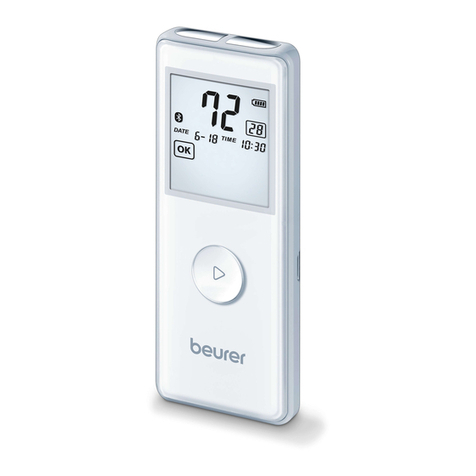
Beurer
Beurer ME 90 Instructions for use
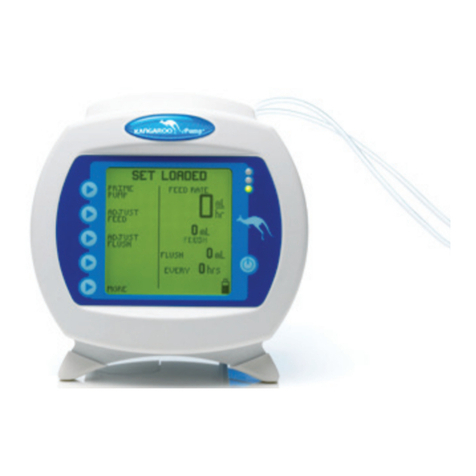
Cardinal Health
Cardinal Health Kangaroo ePump user guide
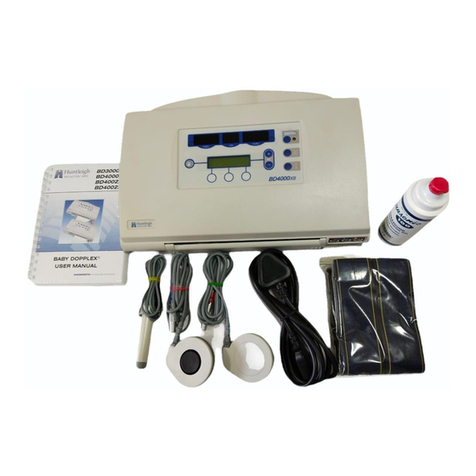
Huntleigh
Huntleigh Baby Dopplex 4000 Series user guide

Trudell Medical International
Trudell Medical International Aerobika Instructions for use
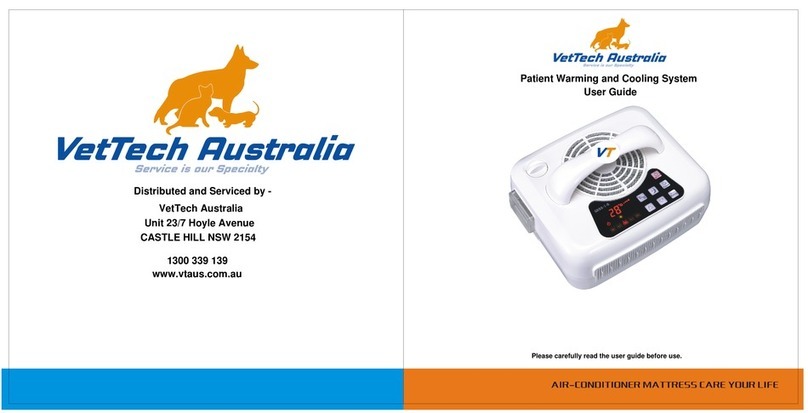
VetTech Australia
VetTech Australia VT7498 user guide
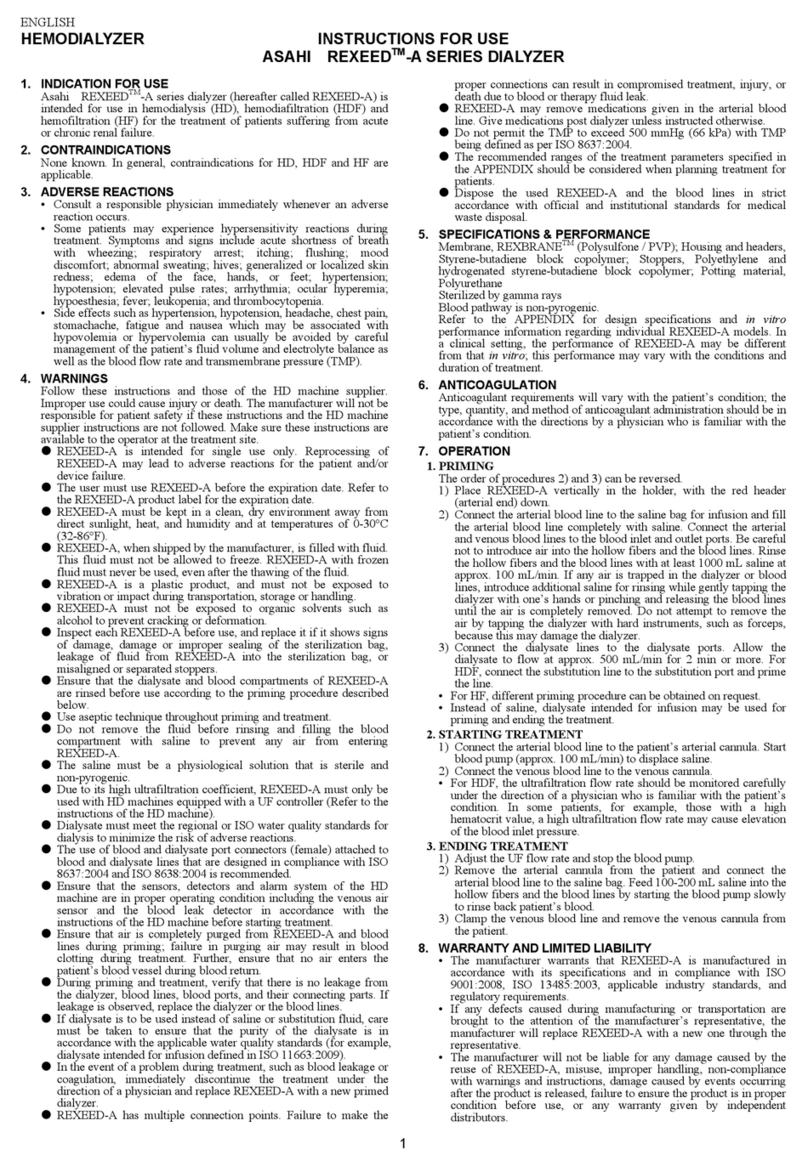
ASAHI
ASAHI REXEED A Series Instructions for use
